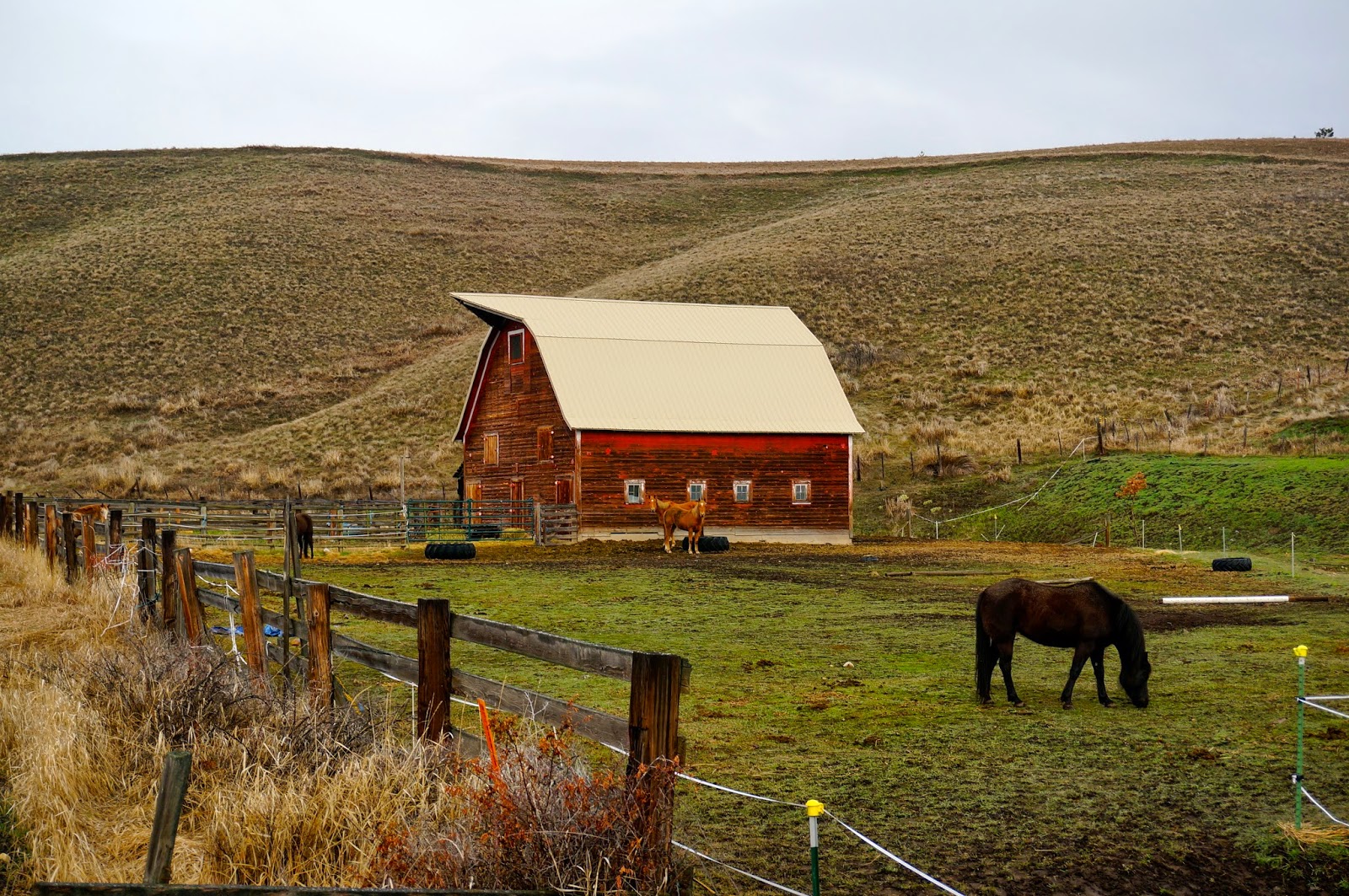Whatever you think of what the Whites did to the Wallowa Nimiipuu and the Chiefs Jospeh, Older and Younger, one can still admire the hard work of pioneers settling here. This mountain valley though productive because of the rivers coming off the mountains, is isolated. Roads and railroads to anywhere were non existent in early years and few in later years.
That meant you could not readily ship in goods such as ploughs. You had to make them. Indeed the need for steel and iron forges was a factor in developing the bronze forges used by artists beginning in the 1980s.
But not only did iron have to be forged locally, you could only survive by your own hard work here. You had to grow it and refine it by hand whatever it was from beef to dairy products to clothing to hand hewn fences and homes built from stone or wood.
Princess took me to the Leap, just north of the town of Enterprise. Here you cannot see Wallowa Lake and the Wallowa mountains are sometimes hidden by the rolling hills of the Leap.
What you do see he is bits and pieces of the Old West pioneer life and what remains of the ranching life today.
There are too things that are inevitable -- hard work and change.
These hills were once covered by Native Bunch Grasses. These grasses were not adapted to the heavy grazing of European livestock. We don't think of it that way, but the cattle brought by the pioneers were not part of the American West until the last couple hundred years. Native grasses were adapted to the lighter footed deer and antelope who once played upon these slopes. With the cattle came seed wheat from Europe as well as weed seeds. European grasses were adapted to the cattle and were tough due to the silica incorporated into their shafts. Some, such as Cheat Grass, are inedible to the cattle. But the cattle loved the Native bunch grasses that were tender and ate them rapaciously. They grew fat and in numbers until most of the bunch grasses were gone.
Change.
Then too, of course, the settlers came. They could almost live in peace with the Indians, at least as long as not too many of them moved in. It was the miners who truly could not live with the Indians. When gold was discovered that they petitioned the US government which always found in the White Man's favor. So in with the whites and out with the Indians.
Change.
As more white settlers came, more agriculture came to Wallowa Valley and County. Hogs came and sheep and dairies. Farmers and animals grew in number and size until there were too many. Cheat grass could not support what bunch grass could support and inevitably the boom in farming came to a halt. In the long run, beef cattle ranching with lower numbers of animals was what was sustainable.
Change.
Then came environmentalists and environmental regulations. The environmentalists saw the remaining bunch grass prairie needed to be preserved. Environmental regulations meant water pollution and safety standards had to be tightened. Land was put into preserve with little or no grazing. Dairies and slaughter houses closed.
Change.
One thing never changes -- the hard work of farmers and ranchers. When the cow or the sheep gives birth and you wish to save the baby from the trickster, Coyote, you have to get up in the middle of a cold wet night and labor with your cow or sheep. You work from dawn to dusk and during harvest season even more. And the animals always need tending. You horse might shelter in a barn, but you need to feed it and groom it. And if you right it, you must brush it and care for it before and afterwards too. You have to clean it's shoes and make sure that they are in place.
Work
That cow dog or sheep dog may be more helpful than a human, but he or she needs care and feeding too.
More work.
And the fields need tending. Poughing and then planting and fertilizing and harvesting.
Still more work.
And the winer snows lie heavy on the fence. You have to dig a hole and then another and string the barbed wire tight. And then the sheep need feeding and the ewe is sick. And it never ends.
Work, work, work.
But then there are the views. You get up at dawn and check on the horses in the pasture. The Wallowas rise beyond the hill.
The horse knows you and knows you bring food and come just because you are there without a call.
Introductionhttp://extension.oregonstate.edu/wallowa/sites/default/files/WC_Custom_and_Culture_final.pdf













No comments:
Post a Comment